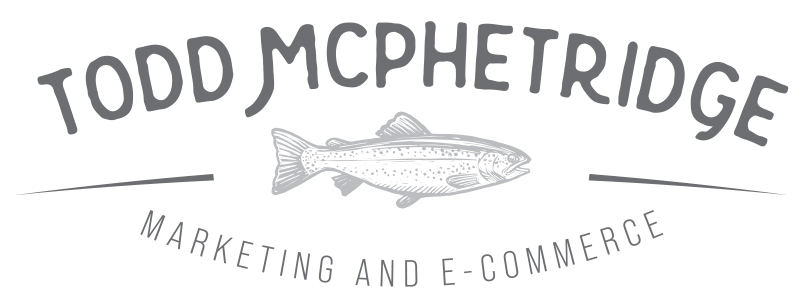Attribution should help leaders decide where to place the next dollar, not spark weekly debates. The most reliable systems keep data simple, label traffic precisely, and reconcile platform claims with a common set of rules. This guide lays out a practical framework for DTC brands: disciplined UTM conventions, server-side signals that reduce data loss, cohort reads that reveal true performance, and a straightforward truth table that turns numbers into decisions.
What Reliable Attribution Must Do
- Record the journey with consistent labels from the first click to the second order.
- Minimize data loss from privacy changes, blockers, and app behavior.
- Report in a format leaders can understand in five minutes.
- Support decisions about budgets, creative, merchandising, and promotions.
UTM Conventions That Survive Scale
UTMs are the backbone of trustworthy attribution. When labels drift, analysis drifts. Standardize five parameters and protect them with guardrails.
- utm_source: the platform or partner name written once and never altered.
- utm_medium: the traffic type such as paid_social, paid_search, display, email, sms, affiliate, or organic.
- utm_campaign: business purpose or theme such as hero_sku_launch_q3 or evergreen_retention.
- utm_content: creative hook or format such as ugc_demo_15s or carousel_proof.
- utm_term: only for search to capture the target query or keyword theme.
Rules that prevent chaos:
- Use lowercase and underscores. Avoid spaces and special characters.
- Prohibit free typing in ad managers by using picklists or naming templates.
- Pass UTMs into all landing URLs, including short links and QR codes.
- Carry UTMs through redirects and store them in first-party cookies to persist session joins.
Server-Side Signals That Reduce Data Loss
Client-side pixels lose visibility when browsers block scripts or when users navigate in apps. Server-side signals improve match rates and stabilize measurement without violating privacy expectations.
- Event forwarding: send purchase, add_to_cart, and lead events from your server or tag gateway to platforms in parallel with client events.
- Event de-duplication: include event names and identifiers so platforms count each real action once.
- Hashed customer fields: transmit hashed email or phone when permissioned to increase attribution accuracy.
- Consent-aware logic: respect user choices and regional rules. Only send data fields aligned with consent states.
- Error monitoring: log server responses and alert on spikes in failures or timeouts.
Server-side does not replace UTMs. It complements them by increasing the chance that a real conversion is linked to the right touchpoint.
Cohort Reads That Leaders Trust
Single-day ROAS hides delayed effects and retention. Cohort analysis reveals the real economics of a program by tracking groups of customers who share a first touch or a first purchase period.
- Acquisition cohort: group customers by first touch channel, campaign family, and week of acquisition.
- Purchase cohort: group by first purchase month to analyze repeat rates, AOV growth, and returns.
- Metrics to track: CAC, first order contribution margin, day 30 revenue per customer, day 60 revenue per customer, day 90 LTV to CAC.
- Use cases: validate creative pillars that lift long-term value, judge promo cannibalization, and guide inventory buys.
A Simple Truth Table for Decisions
No single source tells the whole story. Use a consistent rule set that states which source is authoritative for each decision. This reduces meetings spent reconciling dashboards.
| Decision | Primary Source of Truth | Secondary Check | Notes |
|---|---|---|---|
| Pause or scale a creative asset | Platform metrics by creative (CTR, CPC, add-to-cart rate, platform ROAS) | Landing conversion by entry page | Act quickly on platform signals. Confirm with site behavior to spot misleading clicks. |
| Reallocate budget across channels | Blended ROAS and CAC in analytics by channel | Post-purchase survey first touch | Use blended numbers for dollars. Use survey as a directional tie-breaker. |
| Keep or kill a prospecting audience | Platform CPA to add_to_cart and qualified session rate | Bounce and scroll depth on landing | Judge quality earlier than purchase to protect learning budgets. |
| Evaluate a promotion | Contribution margin per order and attach rate | Cohort LTV impact | Do not chase top-line if margin or future value falls. |
| Merchandising prioritization | Entry intent conversion by SKU family | Search demand and review velocity | Fund media for products with strong intent and proof momentum. |
| Retention program health | Day 60 and day 90 revenue per acquired customer by source | Email and SMS opt-in rate at acquisition | Strong retention lifts blended return even if first order ROAS is modest. |
Scorecard Leaders Can Read in Five Minutes
Present one page that covers performance at the level where decisions happen.
- Spend and revenue: by channel and by creative pillar.
- Blended ROAS and CAC: with definitions visible on the page.
- Top entry pages: conversion by intent group such as home, PDP, comparison, and content.
- Cohort health: day 30 and day 60 revenue per customer by channel of acquisition.
- Guardrails: minimum contribution margin and maximum CAC by tier, with status lights.
Implementation Blueprint
Label Everything at the Source
- Lock UTM templates in ad accounts with enforced naming.
- Auto-append UTMs for email, SMS, and affiliates.
- Build a lookup table that maps platform names to a single utm_source label.
Stabilize Event Quality
- Define a canonical list of events: view_content, add_to_cart, begin_checkout, purchase.
- Tag each event with currency, value, and product identifiers.
- Send server-side events with de-duplication keys that match client events.
Persist and Join Sessions
- Store UTMs in first-party cookies with reasonable timeouts.
- Pass UTMs through checkout so orders carry clean attribution.
- Record the landing page family to connect intent with conversion.
QA and Monitoring
- Daily: confirm that purchase counts match across platform, analytics, and the order system within acceptable tolerances.
- Weekly: review event failure logs and spikes in untagged sessions.
- Monthly: sample orders to verify attribution lineage from first touch to purchase.
Privacy and Consent Without Confusion
Respect for user choice builds trust and protects your data layer from future rework.
- Collect consent in clear language with separate choices for analytics and advertising.
- Honor consent in both client and server flows.
- Provide access and deletion pathways that are easy to use and documented.
Common Failure Modes and Fixes
- UTM drift: campaigns use slightly different labels for the same channel. Fix by enforcing templates and building validation rules that reject unknown values.
- Attribution gaps on social app traffic: in-app browsers block scripts. Fix with server-side purchase events and robust UTMs.
- Double counting from duplicate pixels: multiple installers added the same tag. Fix with a tag inventory and a single manager that owns deployment.
- Chasing platform ROAS without reality checks: inflated view-through makes weak assets look strong. Fix with the truth table and blended numbers for budget moves.
- Promo distortion: deep discounts lift top line but harm contribution margin. Fix with margin reporting beside ROAS in the scorecard.
Experiments That Usually Pay For Themselves
- Shorten attribution windows on remarketing to reduce free riding and reveal true prospecting performance.
- Introduce first-touch capture in post-purchase surveys and compare to UTMs each month.
- Split test landing intent by sending the same creative to PDP versus comparison pages.
- Run holdout tests in email and SMS to quantify incremental lift and adjust blended ROAS expectations.
- Seed lookalikes with high LTV cohorts and track downstream value by acquisition cohort.
Two Quick Scenarios
Scenario 1: Platform ROAS looks strong but revenue in analytics is flat
Apply the truth table. Keep creative running if platform signals are healthy, but verify landing conversion and contribution margin. If site behavior contradicts the platform, cap spend and shift testing to new hooks while you audit event quality.
Scenario 2: Prospecting looks weak but retention is strong
Read cohorts by first touch. If day 60 revenue per customer is high for a given channel, tolerate a lower first order ROAS within guardrails. Increase zero party capture at acquisition to compound lifecycle value.
How a Marketing Consultant Provides Clarity
The job is to simplify complex signals into a small set of rules that everyone follows. That includes the naming system, the truth table, the weekly scorecard, and the cadence for decisions. When the framework is in place, creative teams focus on better ideas, channel owners move budget with confidence, and finance trusts that growth is margin safe.
Get Started Today
Adopt a single UTM template, light up server-side purchase events, publish the truth table, and launch a one-page scorecard. Start with one channel and one hero SKU. Measure results for thirty days, then expand. Reliable attribution is not a big project. It is a set of habits that keep your data honest and your decisions fast. If you need help with your marketing, reach out to Todd today.

















